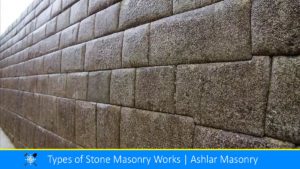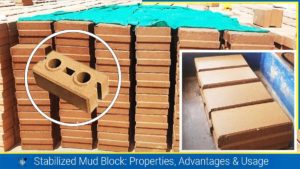The modern construction industry heavily relies on bricks as the fundamental components for building structures. The selection of bricks in masonry construction depends on their material, which can include clay, concrete, lime, fly ash, etc. These materials give rise to a diverse range of brick types, each crafted through distinct manufacturing techniques.
Below, you will find a comprehensive list of these brick types. The popularity of bricks as building construction materials from the earlier days to modern times is because of their readily availability, cheapness, workability and durability. The choice of specific brick types is guided by both functional and aesthetic considerations. In this article, we discuss the types of bricks used in building construction.
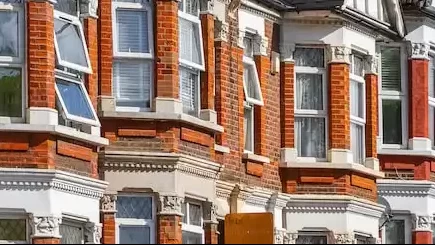
Types of Bricks Bases on Their Sizes
Bricks used in masonry can be of two types: –
- Traditional Bricks
- Modular Bricks
Traditional Bricks
Traditional bricks are those whose size is not standardized. The dimensions of this brick vary from place to place. The length ranges from 200mm to 300mm, the width ranges from 100mm to 130mm and the thickness varies from 50mm to 75mm. The commonly adopted nominal size of traditional bricks is 230mm x 114mm x 76mm for the SI unit and 9″ x 4 1/2″ x 3″ approximately for the imperial unit.
Modular Bricks
Modular brick units are those whose size is limited to the standard set by the Bureau of Indian Standards Institution, India. Any brick of uniform size as laid down by BIS is known as a modular brick. The standard size of the brick is:
| Sl.No. | Length (mm) | Width (mm) | Height (mm) |
|---|---|---|---|
| a. | 190 | 90 | 90 |
| b. | 190 | 90 | 40 |
Also, read: Comparison of Brick Masonry and Stone Masonry
Types of Bricks Based on Raw Materials
In this category, we classified bricks according to the materials used for making the bricks. The bricks are as follows: –
- Sun-Dried Clay Bricks
- Burnt Clay Bricks
- Fly Ash Bricks
- Concrete Bricks
- Engineered Bricks
- Sand Lime Bricks
Sun-Dried Clay Bricks
These bricks are dried with the help of the heat from the sun, thus the name sun-dried bricks. Clay is prepared and shaped with the mould and dried in the sun. Therefore, they are not as strong and also have less resistance to water and less resistance to fire. This type of brick is sometimes known as unburnt bricks. Sun-dried bricks find application in the construction of temporary structures, as they are not suitable for permanent buildings. These bricks lack the durability required for long-lasting structures.
Burnt Clay Bricks
Burnt clay bricks are burnt bricks that are good quality bricks but they also contain some defective bricks and come in four classifications as discussed below. These types of bricks are normally manufactured according to the standard stipulated by BIS and come in modular standard sizes.
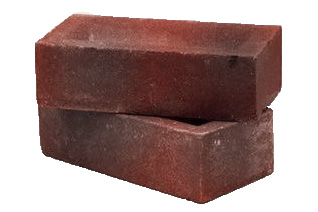
Fly Ash Bricks
Fly ash bricks are made from fly ash and water. These bricks have better properties than clay bricks and great resistance to cycles of freezing and thawing. These bricks contain a high concentration of calcium oxide which is used in the production of cement, which is why they are also called self-cementing bricks. Fly ash bricks are lightweight and therefore reduce the self-weight of structures. The advantages of fly ash bricks over clay bricks are that they have high fire insulation, high strength, uniform sizes for better joints and plaster, less water penetration, and do not require soaking before use in masonry construction.
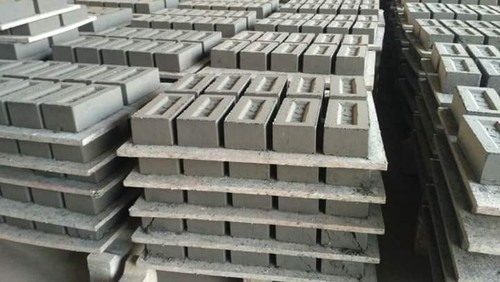
Also, read: What are Refractory Bricks?
Concrete Bricks
Concrete bricks are manufactured using cement concrete. These bricks can be manufactured in sizes as required. The advantages of using concrete bricks over clay bricks are that they can be manufactured at a construction site, reduces the quantity of mortar required, and can be manufactured to provide different colours as pigmented during their production. Concrete bricks are used for the construction of masonry and framed buildings, facades, and fences, and provide an excellent aesthetic presence.
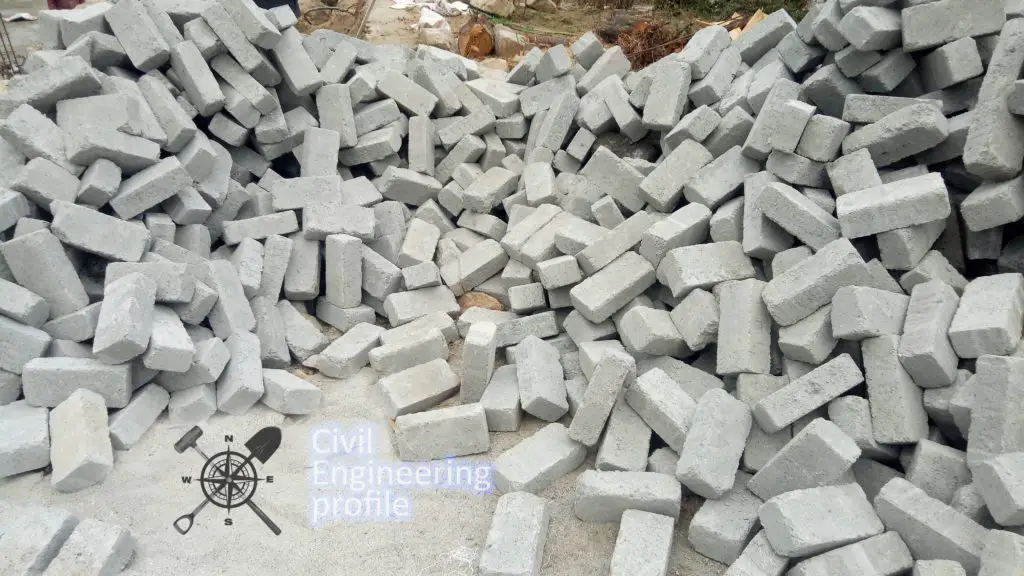
Engineered Bricks
Engineering bricks have high compressive strength and are used in special applications where strength, frost resistance, acid resistance, and low porosity are required. These bricks are commonly used for basements where chemical or water attacks are prevalent and for damp-proof courses.
Engineered bricks are of two types and they are rated as class A and class B. The class A brick has a compressive strength greater than 125N/mm² and water absorption is less than 4.5%. Class B engineering bricks have a compressive strength greater than 75N/mm² and water absorption is less than 7%.
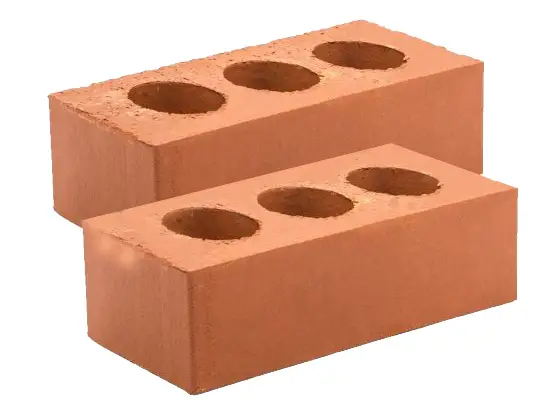
Sand Lime Bricks
Calcium silicate bricks are made of sand and lime and are popularly known as sand lime bricks. These bricks are used for several purposes in construction industries such as ornamental works in buildings, masonry works etc.
Types of Bricks Based on Their Quality
In this category, bricks are classified according to quality wise. Masonry bricks are classified into three classes namely: –
- First class bricks
- Second class bricks
- Third class bricks
- Fourth class bricks
First Class Bricks
First-class bricks are strictly limited to the standard size of modular bricks, which are 19 cm x 9 cm x 9 cm in actual size, as ten layers of bricks laid in mortar form a 1-meter-high masonry wall. These types of bricks are made from good quality plastic clay which is free from salt deposits. They have a good appearance with straight edges and surfaces. The bricks exhibit a remarkable similarity in colour, presenting a uniform appearance. They undergo thorough burning, ensuring their robustness, and emit a distinct, resounding sound (hard ringing) when struck together.
It is free from cracks, chips, blemishes and nodules of lime. When immersed in water for an hour, they do not absorb more than one-sixth of their weight. When dried, they show no sign of efflorescence
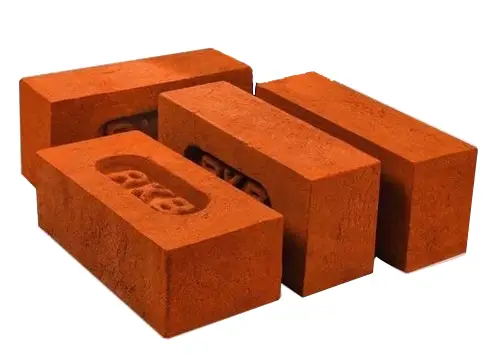
Uses: First-class bricks are used for permanent structures, i.e. external walls, floors, reinforced bricks, arches, etc. They are more expensive than other types of bricks.
Second Class Bricks
Second-class bricks should also confined to the standard size stipulated in the modular bricks, but they are, slightly irregular in shape and colour. They are also fully burnt, and a ringing sound is emitted when two bricks are struck into each other. When immersed in the water for one hour, they do not absorb water more than one-fourth of their weight.
Uses: Second-class bricks are used almost everywhere unlike first-class bricks due to being inexpensive and readily available. They are used in partition walls, exterior walls, posts, boundary walls, flooring, etc. The brick wall is well plastered, as is the case for the exterior and partition walls.
Third Class Bricks
These types of bricks are irregular in size, shape and finish. They are not burnt fully, due to which they are reddish-yellow in colour. These bricks have low crushing strength. The water absorption property of third-class bricks is very high compared to the above two-class bricks. They are not used for quality brick masonry.
Uses: This type of brick is used for temporary and unimportant structures in the region where there is not much rain.
Fourth Class Bricks
These are the over-burnt bricks. They are dark in colour. The shape is irregular. They are used as aggregates for concrete in foundations, floors and roads.
Also, read: Comparison Between AAC and Fly Ash Blocks: 10 Points of Comparison
FAQs:
Q: What are the common types of bricks?
Ans: The common types of bricks are as follows:
1. Sun-Dried Clay Bricks
2. Burnt Clay Bricks
3. Fly Ash Bricks
4. Concrete Bricks
5. Engineered Bricks
6. Sand Lime Bricks
Q: Which class of brick is good for house construction?
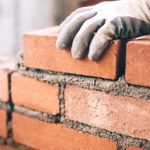
Ans: First and Second-class bricks are commonly used bricks for house construction. A home constructed with the first class of bricks is costlier than the second class of bricks. They have almost the same range of life expectancy and if looking for a good finishing, the first-class brick should be given priority. Masonry walls constructed with second-class brick should be covered with plaster on both sides.
Q: What are the classes of the bricks?
Ans: The modular bricks are classified as: –
1. First-class bricks
2. Second-class bricks
3. Third-class bricks
4. Fourth-class bricks
Q: What are clay bricks?
Ans: Clay bricks are made from natural clay that is moulded and then fired in a kiln. They are known for their durability, strength, and aesthetic appeal. Clay bricks are commonly used in both structural and decorative applications.
Q: What are engineering bricks?
Ans: Engineering bricks are dense and strong bricks designed for specific applications that require high load-bearing capacity, resistance to chemicals, and low water absorption. They are often used in areas where structural integrity is critical, such as in bridges, sewers, and retaining walls.
References:
- Brick. (2022, October 10). In Wikipedia. https://en.wikipedia.org/wiki/Brick
- Punima, Dr B. C. (2006). Building Construction. Luxmi Publication (P) Limited.
- Allen, E. (2022, October 16). Fundamentals of Building Construction: Materials and Methods 5th (fifth) edition. Example Product Manufacturer.
- Dwivedi, P., & Bajpai, P. (2018). Hand Book of Civil Engineering (2018th ed.). CL Media (P) Ltd.
- Duggal, S. K. (2008). Building Materials. New Age International (P) Ltd., Publishers
![]()





